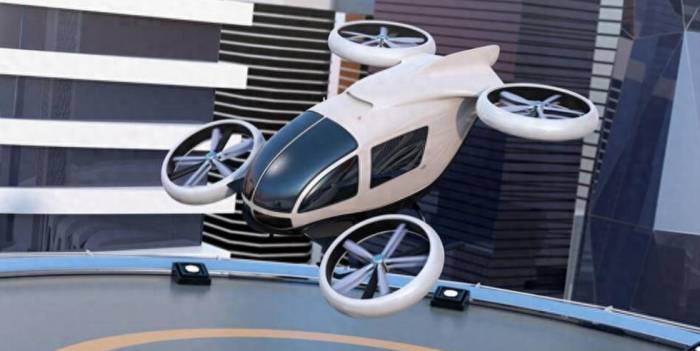The current low-altitude economy is being hotly speculated in the A-share market. This compels me to think about the causes and consequences of the low-altitude economy. Speaking of the low-altitude economy, we must start with drones or helicopters, as they are the mainstay of the low-altitude economy.
Both drones and helicopters have their own strengths and weaknesses compared to cars. Obviously, those flying in the sky are more flexible than those running on the ground, and they are not affected by terrain. In some cases, the efficiency of drones and helicopters is higher, such as mountain rescue, mining exploration, and low-altitude logistics.
Advertisement
However, drones and helicopters also have their shortcomings. For example, they are not suitable for heavy weight transportation, the technical difficulty is greater, and the maintenance cost is higher. It can be seen that, overall, compared to cars, drones and helicopters as the mainstay of the low-altitude economy have their own insurmountable weaknesses. Therefore, they can only serve as a supplement to the transportation tool of cars for a considerable period of time in the future and cannot completely replace cars.
Although the scale of the low-altitude economy is not small, due to the inherent weaknesses of drones and helicopters, their economic scale cannot be compared with the automotive industry for a considerable period of time. Currently, China's automotive industry is a scale of 100 trillion, while the low-altitude economy is only a few hundred billion. Institutions predict that the scale of the low-altitude economy is expected to reach 3.5 trillion in a few years.
Therefore, when we investors invest in the low-altitude economy, we must not overvalue the concept stocks of the low-altitude economy, because the scale of the low-altitude economy is far less than that of new energy vehicles. And it is estimated that the low-altitude economy will see obvious results in 5-10 years, and it may take even longer. Therefore, it is obviously inappropriate to overhype the concept of the low-altitude economy at present.
Why does China want to vigorously develop the low-altitude economy?
It is because of industrial upgrading. The low-altitude economy can promote the upgrading of industries such as aircraft manufacturing, new energy, and information technology. It can also create a large number of job opportunities and inject new vitality into economic development. On the surface, it is a matter of drones, but in reality, it is the upgrading of high-tech industries such as aviation, new materials, information technology, and big data. It is beneficial to enhance China's technological strength.

The essence of the low-altitude economy is the expansion and extension of traditional drone and helicopter businesses, thereby driving the further development of industries such as aviation, big data, modern communication, and artificial intelligence. Therefore, the low-altitude economy is a new quality of productive forces and has significant importance for the development of China's economy.
When it comes to the low-altitude economy, we cannot avoid a new type of aircraft that has emerged in recent years - eVTOL. It is expected to enter thousands of households in the future. eVTOL stands for electric vertical takeoff and landing aircraft, which relies on electricity as a power source, and its cost is lower than that of helicopters, and its operating cost is also far lower than that of helicopters. It looks very similar to drones. In the field of drones, DJI is definitely the world's first, and it should have an innate advantage in doing this kind of thing, but DJI has not taken action in this area at present.The low-altitude economy has a very long industrial chain. Now I will list one or two leading companies for each link. Low-altitude aircraft manufacturing for complete machines: Zhongzhi Shares, Hongdu Aviation, Wanfeng Aowei, China UAV, Aerospace Electronics, Aerospace Rainbow, Zongheng Shares, Guanglian Aviation, Xiaopeng Automobile-W, EHang Intelligent, etc.
Composite materials: Guangwei Composites, Guanglian Aviation, etc. Engines: Zongshen Power, etc. Motors: Wolong Electric Drive. Batteries: CATL, Guoxuan High-tech, and other companies. Electronic control: Blue Ocean Huateng, Hui Chuan Technology, etc.
Low-altitude services - Air traffic control systems: Sichuan Jiuzhou, Lays Information. Radar equipment: Guorui Technology, Si Chuang Electronics. Airport equipment, infrastructure: Weihai Guangtai, Shencheng Jiao. Low-altitude operation maintenance, maintenance training: Haiti High-tech, etc.
Operation: CITIC Offshore Helicopter. Inspection: Guangdian Measurement, Huace Inspection.
Investment strategy for the low-altitude economy: Since the development of the low-altitude economy requires a relatively long period of time, long-term investors can wait for the low-altitude economic concept to cool down and then slowly buy at the lowest possible price. The current is not a good time to invest in the low-altitude economy.
Comment